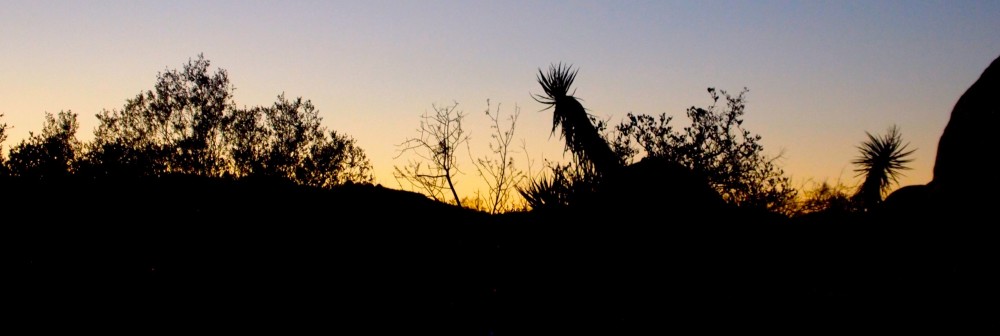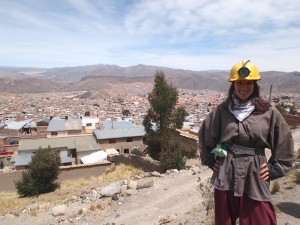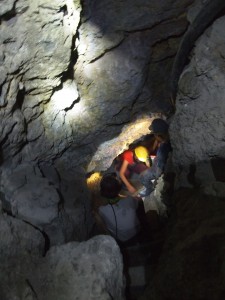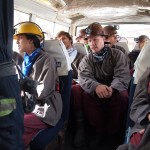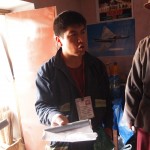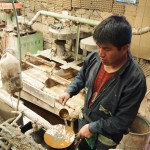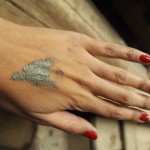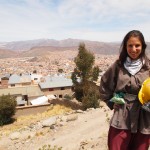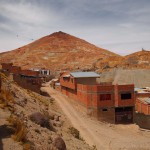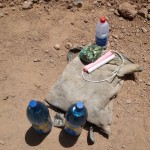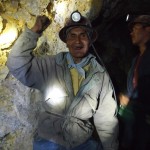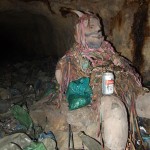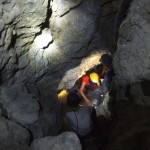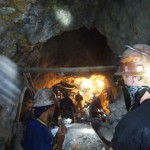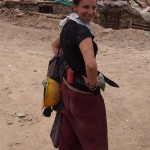Potosi is the highest city in the world, at nearly 13,500 feet above sea level, and you feel the altitude the second you step off the bus. It’s hard to breathe, and you huff and puff just walking down the block… even if it’s a level street. The city is based completely around the mining community, which has been extracting silver and a variety of other minerals from the Cerro Rico mountain for over 500 years.
I’ve hemmed and hawed over the last few weeks, trying to decide if I was going to stop in Potosi and do a tour of the mines, a popular, and really, the only, tourist attraction in the city. Despite it’s popularity, it seemed unethical to pay to take a glimpse at the miserably horrific working conditions that these poor Bolivians are forced to work in.
Despite my initial hesitations, a few people told me positive things about both Potosi and the mine tour, so I decided to breeze through the city, spending less than 24 hours there. I’m really glad I did.
Potosi is a tiny, but charming, city. It’s streets are narrow and lined with cobblestones, the buildings are painted in beautiful bright colors with wrought iron balconies and nice wood detailing. Several churches with gorgeous steeples dot the skyline, and the main plaza is quaint, but beautiful.
We met for our mine tour at 8:30 AM, starting with a pit stop at the office to change into full gear: plasticy pants that looked like a set of scrubs, minus the elastic at the ankle, a long sleeve jacket that velcroed down the front, thick plastic boots, a hard helmet, a waist belt that held the battery for our headlamp, which was attached to our hat by a thick black cord, and finally, a bandana, tied around our neck so that we could semi-protect our lungs from the harsh chemicals we’d be exposed to.
After we were all geared up, we stopped at the miners market — a series of small shops selling bottles of water and soda, face masks, hard helmets, bottles of 96% pure alcohol (yes, for consumption), coca leaves, and, most importantly: dynamite. Dynamite is widely available, and anyone can simply walk into a shop, lay down 20 Bolivianos ($3) and get their hands on a stick, complete with a detonating rope and a bag of aluminum nitrate, which magnifies the explosion. The miners work for themselves, usually in small groups, and are therefore responsible for purchasing and maintaing all their equipment. They are often in the mines for ten or twelve hours at a time, and appreciate any small gifts from tourists.
The other thing that compelled me to take a tour was that most of the tour agencies give back: 15% of the proceeds of our tour went directly to the miners. For this reason, they are happy to see you down in the mines, and answer your questions or exchange a quick “hola.”
Once we’d purchased our gifts and some essential coca leaves for chewing ourselves, we piled back in the van toward the mountain. We stopped at the refinery plant to see the machines that extracted the minerals from the chunks of stone, and our guide even stuck a clump of pure silver on my hand.
Our tour started off on a silly note: our tour guide came out of the office in nothing but his hard hat and boxers, pulled up high enough that we could see most of his butt cheeks, to explain how hot it is in the mines, and our tour guides named the 3 groups horrifically offensive things, like Llama Fuckers. However, the mood quickly sombered once we’d climbed the first 400 meters down into the first level of the mine and crawled our way to the statue of Tios, the Bolivian miners representation of the Devil.
Tios has the body of a man and the horns of a devil, and his statue is covered in confetti, coca leaves, cans of beer, and cigars. The miners offer these things to him in prayer — leaving with them hopes of rich mineral findings, longer life, protection in the tunnels, and even more tourists.
The tunnels are dark, narrow, and very low. One of the poor 6’4 Australian guys in our group could barely walk — I’m an entire 13 inches shorter and I still struggled. Steel tracks for mining cars line the path, and loose stones and rock fragments line the walls, coated in green clumps of sulfur, red iodine and other harsh chemicals brought into the tunnels as the miners work. Clumps of thick black tube carrying compressed oxygen, not for the workers to breathe, but to help run any tools brought down into the mines, run along the tunnel, often times sagging into your vision. Random pieces of wood, possibly placed for reinforcement hundreds of years ago, jut out and threaten to attack your hard hat if you aren’t careful.
You walk through the tunnels hunched over as best you can, at times army crawling on all fours, other times scooting along on your ass. In order to access the different levels of the mines, you have to maneuver your body through thin crevasses, down shaky ladders, and up giant sections of rock with barely any footholds.
On top of the struggle just to maneuver through the dark, the air is dense with chemicals, which hit you like a ton of bricks. As you enter the different levels and areas of the mountain, the air can change instantly, suddenly becoming 5 or 10 degrees hotter than where it was just fifteen feet behind you. With your bandana pulled around your mouth, it was hard to breathe in the thick, limited oxygen. But without it, your lungs and throat stung with the unfamiliar air, laced with chemicals I couldn’t even name.
As we traversed through the mines, our boots six inches deep in a sludge-like concoction of mud, chemicals and minerals, our guide introduced us to a myriad of miners. One man we met was 65 and had been working in the mines for 41 years. Another was 17, and had already spent 4 years underground. Another was just 24 — exactly my age — and had been working in the mines for 7 years. Hearing his age, I let out a gasp. The entire time I’d been living on the east coast, gaining my independence, a college degree, and all of my work experience, this young man had been breathing in toxic chemicals for 10 hours a day, rarely seeing daylight.
After meeting 5 or 6 groups of miners and getting ourselves down all the way to the fourth level of the mine, we made our way back up. All I could think for the last 20 minutes was get me out of here. My legs shook from the physical stress I’d put on them climbing amongst the various levels, my arms (now exposed because it was too hot to wear our jackets) were caked in mud, and my face was slick with sweat.
When we finally saw the light at the end of the tunnel (sorry, I couldn’t help it) and climbed out into the light, our guide offered us each a high five.
“You made it!” he exclaimed with a grin.
Yes, I survived 2 hours in a mine shaft, and by the end I had to restrain myself from running to the exit. But these people work for dozens of years in these conditions. Granted they aren’t climbing and walking through all the paths, across all the levels, but they are sitting in that toxic air, not seeing light for days at a time. On top of that, the miners starve themselves because bringing food into the mines would be unproductive: it would get coated in dust or mud, and give the miners indigestion. Instead, they only chew coca leaves, which build up to look like a small egg inside their cheek, and help with the hunger, altitude and the rough air.
- Our van full of tourists, all geared up
- Our guide showing us a stick of dynamite
- Inside the refinery
- Extracting the silver
- Pura plata! (and my fancy Sucre manicure)
- All geared up and posing with Potosi
- hat-less
- The Cerro Rico mining mountain. Ironically, it’s gorgeous on the outside.
- Some of our gifts to the miners — dynamite, alcohol, coca leaves and big bottles of water
- At 65, this man is one of the oldest workers in the entire mine
- Dios, the Bolivian miners representation of the devil
- One of the many narrow caverns we had to crawl through
- Stopping to talk with more miners, loading mineral-rich rocks into their carts, which then have to be pulled across the mine
- One of the steep sections of cable/steel used for hauling the mining cars
- Attempting to display how dirty and sweaty and disgusting I am…
